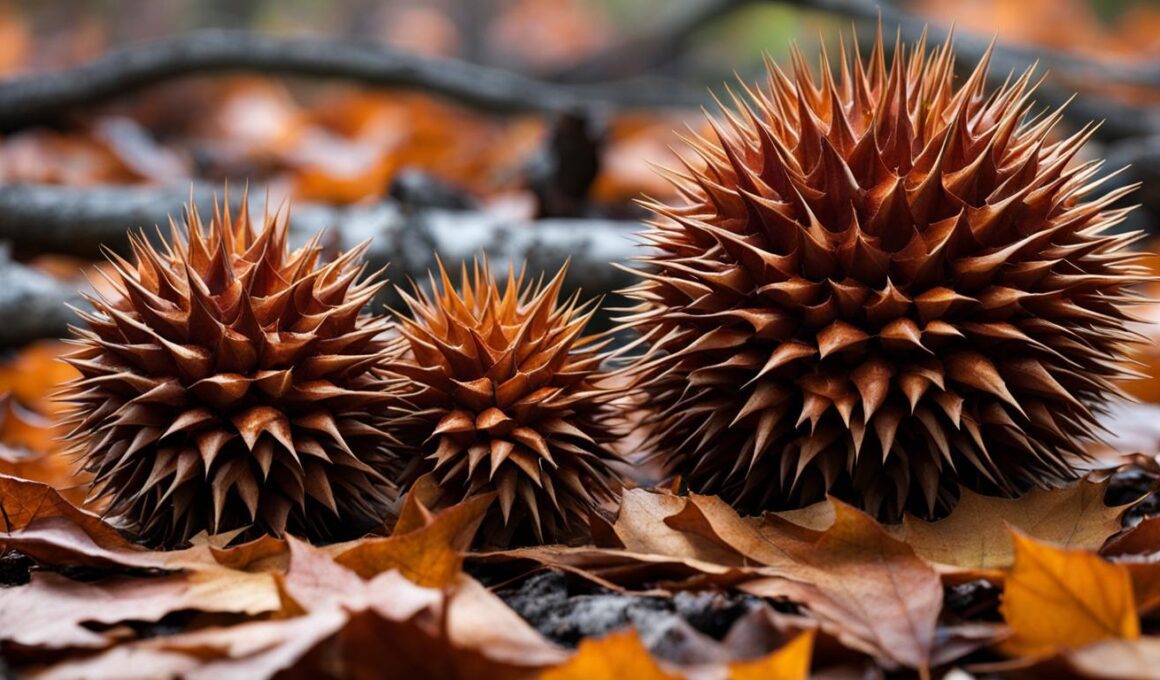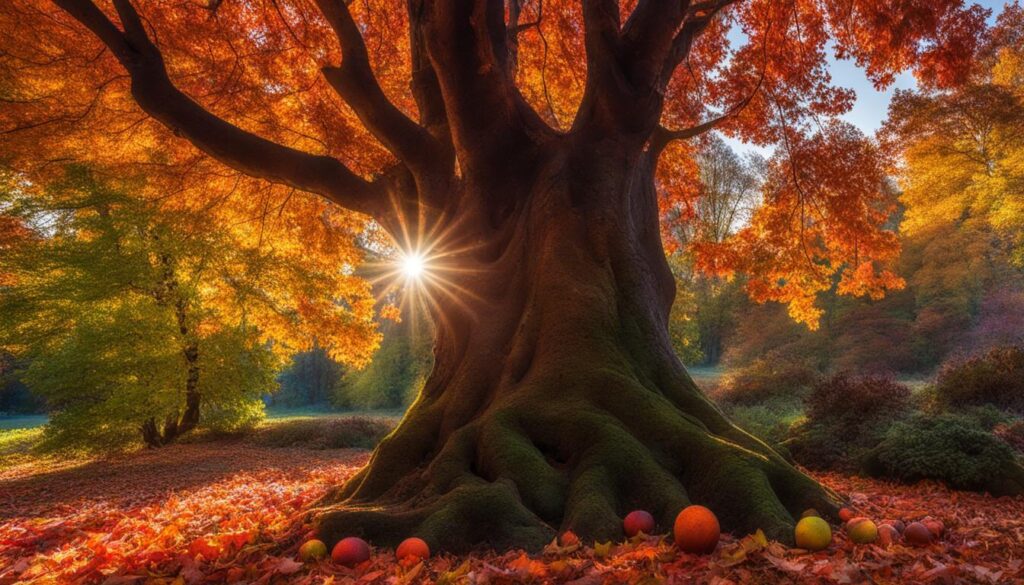Discover the enchanting beauty of autumn with the chestnut tree’s spiky balls, nature’s captivating handiwork. As the leaves turn golden and the air becomes crisp, these unique balls grace the landscape, adding an element of intrigue to the season.
When you think of autumn, what comes to mind? Sweater weather, pumpkin spice, and, of course, chestnut tree spiky balls! These fascinating fruits are a sight to behold, with their spiky exteriors and hidden treasures inside.
But what exactly are these spiky balls? They are none other than chestnuts, the delightful bounty that chestnut trees generously offer during the fall. Found in various regions around the world, including Mt Dandenong in Australia and countries in Europe and Asia, chestnut trees have a rich history and cultural significance.
For thousands of years, chestnuts have been cherished as a valuable food source. Whether roasted, boiled, or used in various culinary creations, these nuts have been an autumn delicacy enjoyed by people across different cultures. But their significance goes beyond sustenance.
Chestnut trees provide vital habitat for wildlife and their wood is highly valued for its rot-resistant properties, cherished in construction and other industries. The spiky balls of the chestnut tree symbolize the bountiful harvest that autumn brings, reminding us of nature’s abundance.
So, this autumn, take a moment to appreciate the remarkable beauty of chestnut tree spiky balls. Whether you stumble upon them during a leisurely stroll or enjoy their delicious nuts, let the unique bounty of autumn leave you captivated and inspired.
The Rich History of Chestnut Trees
Did you know that chestnut trees have a fascinating history that spans thousands of years? The European Chestnut, originally from the forests of the Caucasus region, found its way to Greece over 4,000 years ago. This tree species quickly became significant in ancient eastern Europe, with its nuts being harvested and traded with neighboring countries.
The Romans, renowned for their vast empire, were enamored by the chestnuts and brought them back to Rome. They recognized the value and versatility of these trees, planting them throughout Europe to establish orchards and forests dedicated to nut production and wood supply.
Chestnuts held a special place in the cultures of Greece and Rome, as well as other European civilizations. Historical figures such as Homer, Theophrastus, and Pliny the Elder made references to chestnuts in their works, highlighting their importance in daily life. The chestnut tree became deeply ingrained in Greek culture and remained highly regarded in the Roman empire.
Today, the European chestnut and its rich history continue to captivate people around the world. Boscastle, an ancient European variety, has become a beloved tree species in Europe due to its resilient nature and the flavorful nuts it produces. As you explore chestnut forests, you’ll be reminded of the enduring legacy and cultural significance that these remarkable trees hold.
Chestnut Trees Around the World
Chestnut trees are distributed across various regions globally, showcasing their adaptability and significance in different cultures and ecosystems. Let’s explore the global distribution of chestnut trees and their importance in Asia and North America.
Asia
In Asia, particularly in China and Korea, chestnuts are not only widely produced but also hold an integral place in local cuisine and traditions. China stands as the largest producer of chestnuts worldwide, offering a diverse range of chestnut varieties that are highly regarded for their exceptional flavor and resistance to chestnut blight. The Chinese chestnuts, cherished for their rich taste, are a culinary delight enjoyed in diverse forms such as roasted, boiled, and even used in desserts like chestnut cake. Korea, too, has a thriving chestnut industry, contributing to the market and showcasing its culinary versatility.
North America
In North America, the historical and cultural significance of chestnut trees is deeply rooted. The American Chestnut once dominated the eastern United States, covering vast expanses of forests. However, the species faced devastating consequences in the early 20th century due to the invasive chestnut blight, which decimated a considerable portion of the population. Despite this setback, chestnuts continue to hold their importance in North America. Early European settlers heavily depended on chestnuts as a vital food source, while their nuts served a crucial role in the ecosystem, providing sustenance for wildlife. Today, efforts are underway to restore the American Chestnut through breeding programs and disease-resistant cultivars, preserving its heritage for future generations.
As we explore the global distribution of chestnut trees, we can appreciate their diverse manifestations in different parts of the world, both in Asia and North America.
Conclusion
Chesnut trees and their spiky balls are a fascinating part of autumn’s bounty. These majestic trees not only paint the landscape with vibrant colors but also hold a deep historical significance. For centuries, people have relied on the chestnut tree’s spiky balls, also known as chestnuts, as a valuable food source. These nuts have nourished communities around the world, providing sustenance and nourishment during the fall season.
But the importance of chestnut tree spiky balls doesn’t end there. These unique structures have served multiple purposes in various industries. The strong and durable wood of chestnut trees has been used in construction, while their bark has been utilized in leather production. The chestnut tree’s contribution extends beyond nourishment, making it a versatile and valuable natural resource.
Although the American Chestnut faced devastation from a devastating bark fungus, chestnuts still maintain their significance in different regions. From Europe to Asia and North America, these spiky balls continue to evoke a sense of wonder and hold cultural value. Whether you’re savoring freshly roasted chestnuts during the holiday season or exploring the beauty of chestnut forests, they serve as a reminder of the wonders of autumn and the enduring legacy of the chestnut tree.
Can Chestnut Tree Spiky Balls Be Used for Starting Seeds in Egg Cartons?
Yes, chestnut tree spiky balls can be used for starting seeds in egg cartons. The prickly outer shell helps protect the seeds as they germinate, and the compact size makes them perfect for fitting into individual egg carton compartments. Simply place the spiky balls in the carton, add soil, and watch the seeds grow.










